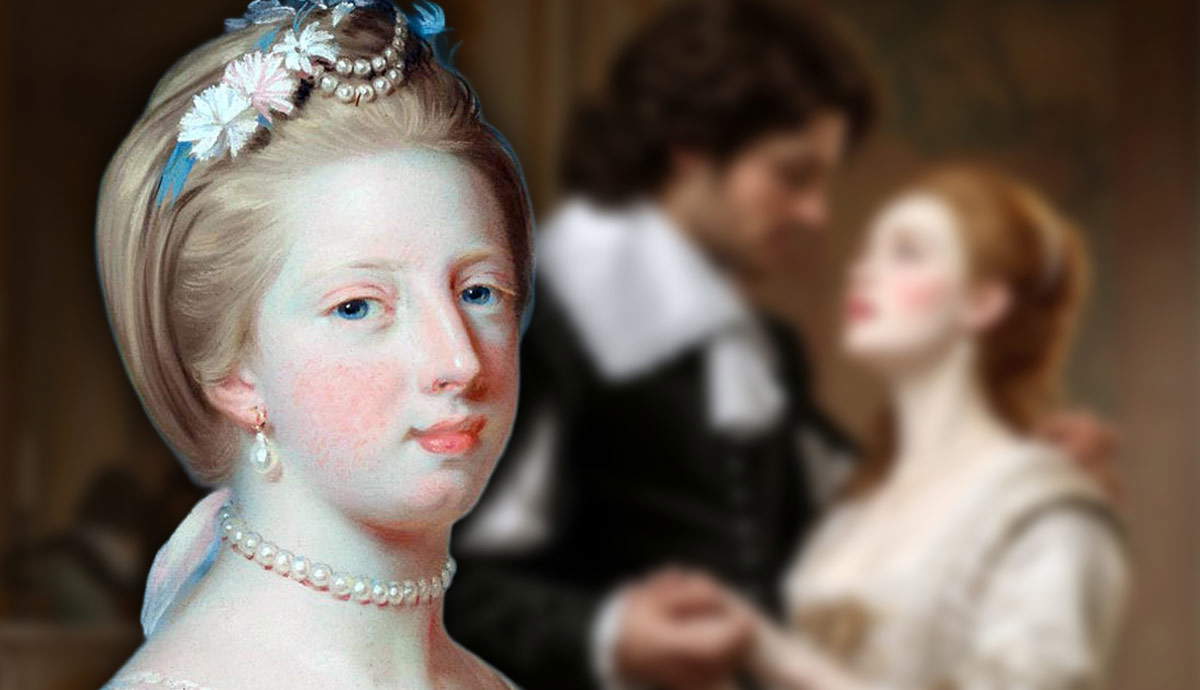
www.thecollector.com
Queen Caroline of Denmark and the Forbidden Love That Rocked a Kingdom
Caroline Matilda was born July 22, 1751. She was the daughter of Frederick, Prince of Wales and Princess Augusta of Saxe-Gotha, and was the youngest of nine children. Her father passed away just before she was born; he was the oldest son and heir of King George II of Great Britain and died at the age 44. Her older brother would eventually become King George III in 1760.
Caroline was educated, and like Queen Victoria later was, excluded from the court due to her mother’s discomfort of the court lifestyle. She could speak French, German, and Italian. She still knew many of her extended relations of the royal family.
Caroline Matilda
Portrait of Princess Caroline Matilda of Great Britain, 1754, by Jean-Etienne Liotard. Source: Wikimedia Commons
Princess Caroline was betrothed and married at a very young age. This was not unusual for the time period between countries and other high-ranking families. Often alliances were shored up as early as possible. Even though many were engaged when they were children, or sometimes even “married”, the actual marriage or relations after would not take place until they were older. It was just to ensure the alliance would not be broken.
Queen Caroline framed portrait. Source: Englishmonarchs.co.uk
In 1766, when she was 15, Caroline married the King of Denmark, Christian VII. They had become engaged early in the year of 1765 as a political marriage before his father died. Christian VII was her first cousin – his mother was her father’s sister. Originally the bride of choice was her sister Louisa, but Louisa suffered from illnesses and had health issues. This was probably a wise decision as Louisa caught tuberculosis and died at 19 years old.
While many marriages of this time were arranged, some could find a friendship or develop love over time. This marriage, however, did not have that. Christian VII had not wanted to get married, or at least not so soon, even if it was important in order to establish an heir.
Christian VII of Denmark
Portrait of King Christian VII of Denmark in coronation robes and holding a crown and scepter, 1772 by Alexander Roslin. Source: Wikimedia Commons
Christian VII was born January 29, 1749 in Copenhagen. He became the King of Norway and Denmark in 1766, the same year he married Queen Caroline. He had several siblings, including two older sisters Sophia and Wilhelmina. Only a few of his siblings survived birth and childhood. His own mother would die after her sixth pregnancy before she was 30. He had a half-brother named Frederick.
There is speculation on what exactly caused the king’s mental illness. There are sources that discuss mental illness in several monarchs of the past. Joanna of Castile—known historically as Joanna the Mad (although many historians today believe she had a smear campaign against her in order for others to seize her throne), and King George III—Queen Caroline’s own relation who seemed to have periods of mental instability, as well as French King Charles VI who suffered from Glass Delusion.
According to Britannica, “his mental instability has been attributed to a brutal childhood governor and to morally corrupt court pages. After his 1766 marriage to Caroline Matilda…he gave himself up to debauchery.” This could have been the result of a father who was an alcoholic, a distant step mother, and his own mother’s death – the trauma of being alone and not having a traditional stable childhood along with a court that allowed “debauchery” to take place.
It is impossible to diagnose from a different time with different resources. He was a bright man during his clarity, and it is thought that he might have suffered from schizophrenia.
Johann Friedrich Struensee’s Connection to the King
Portrait of Johann Friedrich Struensee, 1824, by Jens Juel. Source: Wikimedia Commons
Struensee was born in Germany on August 5, 1737. By this time King Christian VII’s illness was starting to affect the government. They brought Struensee in order to help the king and his mood swings and so-called “eccentricities.” He was later appointed the court physician and was in place to help suggest policies that would be put into place. According to historian John Christian Laursen, “[His] years in power were marked by a flurry of reform measures designed to liberalize the economy, liberate the serfs, and generally bring his idea of Enlightenment to Denmark.” What Struensee did not take into consideration is that not everyone would benefit from these.
The Love Affair Between Queen Caroline and Struensee
Alicia Vikander and Mads Mikkelsen in “A Royal Affair” about Queen Caroline and Struensee. Source: Magnolia Pictures
By all accounts Queen Caroline and Struensee did not like each other or get along at first. When they were eventually found out – as all these things tend to be found out – they both admitted to the affair in order to save the other. However it is hard to completely understand if it was the love affair depicted by many films, or if as Charles Singer states, “[Struensee] ultimately obtained political ascendancy in Denmark and personal ascendancy of that country’s unfortunate queen.”
The Danish film A Royal Affair was released in 2012 and tells the store of the affair between Queen Caroline and Struensee while King Christian VII was falling more ill. While it does follow some plot points, it is unlikely that Caroline wrote a letter to her daughter explaining her parentage. Something like that would have been incredibly damaging to her daughter and her chance at a good life and marriage at that time.
What Happened to Queen Caroline and Struensee?
Struensee’s arrest—from “Fabricius: Illustreret Danmarkshistorie for folket,” 1915 woodcut. Source: Wikimedia Commons
As with most affairs that are against a King, their ending was not a happy one. The aftermath was initially chaotic. King Christian VII arrested Struensee. This led to political confusion because of how involved Struensee was involved in political affairs. Many closest to them were interrogated. Enevold Brandt, a friend of Struensee, admitted to the knowledge of the crime. Public opinion also turned against both Struensee, who was not the most well liked to begin with, and Queen Caroline. They disproved the actions of the queen and got caught up in the very public trial.
Queen Caroline of Denmark by Jens Juel, 1771. Source: Gogmsite
Struensee and his friend Count Enevold Brandt were beheaded, quartered, and put to the wheel. When Struensee died on April 28, 1772 he was only 34 years old and all the politics and reform he worked at in his position by the king was mostly overturned. According to John Christian Laursen, “Late eighteenth-century Denmark was not known for barbarities of the type represented by Struensee’s executions. Previously disgraced prime ministers had merely been imprisoned.”
Although she did not face a trial and execution, Queen Caroline did not fare much better. She was essentially put under house-arrest in her bedroom with her freedoms restricted. She lived in exile for the rest of her life – 50 lonely years still hated by the majority of the country. Her affair became a symbol of forbidden love and the outcomes of an unhappy marriage, as well as the political upheavals of Denmark in the 18th-century.










